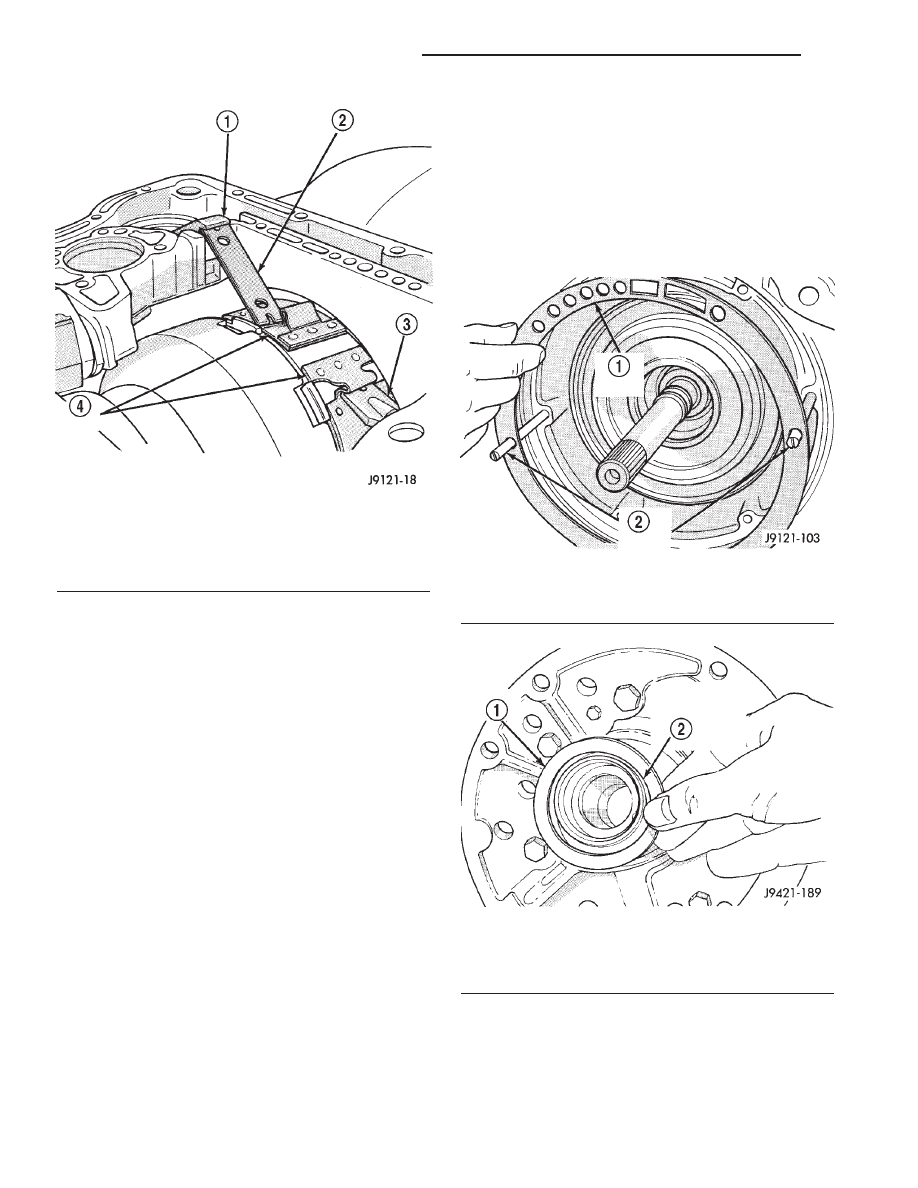Dodge Dakota (R1). Manual - part 663

OIL PUMP
(1) Install oil pump Pilot Studs C-3288-B in case
(Fig. 57).
(2) Install new oil pump gasket on pilot studs and
seat it in case. Be sure gasket is properly aligned
with fluid passages in case (Fig. 57).
(3) Coat front clutch fiber thrust washer with
petroleum jelly to hold it in place. Then install
washer over reaction shaft hub and seat it on pump
(Fig. 58).
CAUTION: The thrust washer bore (I.D.), is cham-
fered on one side. Make sure the chamfered side is
installed so it faces the pump.
(4) Check seal rings on reaction shaft support. Be
sure rings are hooked together correctly. Also be sure
fiber thrust washer is in position (Fig. 59). Use extra
petroleum jelly to hold washer in place if necessary.
(5) Lubricate
oil
pump
seals
with
petroleum
Mopar® ATF +4, type 9602.
(6) Mount oil pump on pilot studs and slide pump
into case opening (Fig. 60). Work pump into case by
hand. Do not use a mallet or similar tools to seat
pump.
(7) Remove pilot studs and install oil pump bolts.
Tighten pump bolts alternately and evenly to fully
seat pump in case. Then final-tighten pump bolts to
20 N·m (15 ft. lbs.) torque.
(8) Verify correct installation. Rotate input and
intermediate shafts and check for bind. If bind exists,
components are either mis-assembled, or not seated.
Disassemble and correct as necessary before proceed-
ing.
Fig. 56 Front Band And Linkage
1 - LEVER
2 - STRUT
3 - ANCHOR
4 - FRONT BAND
Fig. 57 Oil Pump Gasket And Pilot Studs
1 - OIL PUMP GASKET
2 - PILOT STUDS C-3288-B
Fig. 58 Front Clutch Thrust Washer
1 - THRUST WASHER
2 - CHAMFERED SIDE OF WASHER BORE GOES TOWARD
PUMP
21 - 296
AUTOMATIC TRANSMISSION - 46RE
AN
AUTOMATIC TRANSMISSION - 46RE (Continued)